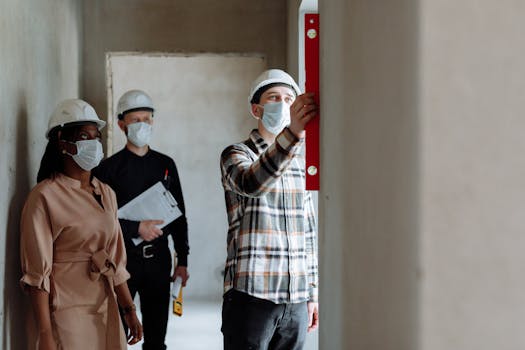
Table of Contents
- Protecting Your Slice of the California Dream: Property Insurance in Los Angeles
- Why Home Insurance Matters – Especially in Los Angeles
- Real Costs & Factors Affecting Rates Locally
- Top Insurance Companies Serving the Los Angeles Area
- Practical Money-Saving Tips for Home Insurance
- Local Requirements & State-Specific Regulations
- FAQ – Your Questions Answered
- Protecting Your Future, One Policy at a Time
Protecting Your Slice of the California Dream: Property Insurance in Los Angeles
Okay, let’s be real. Living in Los Angeles is amazing. The weather, the energy, the…traffic. But alongside the sunshine and opportunities comes a unique set of risks for homeowners. I’ve been a financial advisor here in LA for over fifteen years, and honestly, one of the most frequent conversations I have with clients revolves around property insurance. It’s not the most exciting topic, I get it. But it’s absolutely crucial. Have you ever noticed how quickly things can change here? A beautiful day can turn into a Santa Ana wind event, and suddenly you’re facing a very real threat to your home.
This isn’t just about fulfilling a mortgage requirement; it’s about protecting everything you’ve worked for. This article will break down everything you need to know about property insurance in Los Angeles, from understanding the specific risks we face to finding the best coverage at the right price.
Why Home Insurance Matters – Especially in Los Angeles
Los Angeles isn’t like most places in the country when it comes to homeowner’s insurance. It’s…complicated. We’re dealing with a confluence of factors that drive up risk and, consequently, premiums. Here’s the thing: we’re prone to several major disasters.
- Earthquakes: This is the big one, obviously. While standard homeowner’s insurance doesn’t cover earthquake damage, it’s something every homeowner needs to seriously consider supplemental coverage for. More on that later.
- Wildfires: Southern California wildfires are becoming increasingly frequent and intense. The hills surrounding LA are beautiful, but they’re also fuel for devastating fires. Proximity to brush, even if it’s not on your property, significantly impacts your rates. I remember a client a few years back who lived in the Hollywood Hills – she was shocked at her premium until we discussed the wildfire risk assessment for her area.
- Mudslides & Landslides: Heavy rains, especially after a fire, can trigger mudslides and landslides, particularly in hillside communities.
- Water Damage: From burst pipes to aging infrastructure, water damage is a surprisingly common claim in LA.
- Civil Unrest: Sadly, Los Angeles has experienced periods of civil unrest, and standard policies generally cover damage from riots, but it’s good to confirm.
According to the California Department of Insurance, the average homeowner’s claim in California is higher than the national average, and Los Angeles County consistently sees a significant portion of those claims. That translates to higher insurance costs for everyone. It’s not just about if something will happen, but when.
Real Costs & Factors Affecting Rates Locally
Okay, let’s talk numbers. What can you realistically expect to pay for property insurance in Los Angeles? As of late 2023/early 2024, the average annual premium for homeowner’s insurance in Los Angeles is around $1,600 - $2,500. But that’s a very broad range. Here’s what influences your specific rate:
- Location, Location, Location: This is huge. Living near a fault line, in a high-fire-risk zone, or on a hillside will dramatically increase your premiums. Even the specific fire protection district you’re in matters.
- Home Value & Square Footage: Larger, more valuable homes naturally cost more to insure.
- Construction Materials: Homes built with fire-resistant materials (like stucco and tile roofs) often qualify for discounts. Older homes, especially those with wood shake roofs, are more expensive to insure.
- Deductible: A higher deductible (the amount you pay out-of-pocket before insurance kicks in) will lower your premium, but make sure you can comfortably afford that deductible if you need to file a claim.
- Coverage Limits: How much coverage do you need to rebuild your home and replace your belongings? Don’t skimp here.
- Claims History: A history of claims will likely lead to higher premiums.
- Credit Score: Insurance companies often use credit scores as a factor in determining risk.
- Age of the Home: Older homes can have outdated plumbing, electrical systems, and roofing, increasing the risk of claims.
Top Insurance Companies Serving the Los Angeles Area
There are a lot of options out there, which can be overwhelming. Here are some of the major players offering property insurance in Los Angeles:
- State Farm: Consistently ranks high in customer satisfaction and offers a wide range of coverage options.
- Farmers Insurance: A strong presence in California, with local agents and tailored policies.
- Allstate: Another national carrier with competitive rates and various discounts.
- USAA: (For military members and their families) Known for excellent service and competitive pricing.
- Wawanesa: A regional insurer gaining popularity in California for its competitive rates and customer service.
- Mercury Insurance: A California-based insurer offering a variety of coverage options.
It’s worth noting that some companies are pulling back on writing new policies in high-risk areas of California, so it’s important to shop around and get quotes from multiple insurers. Don’t just go with the first quote you receive.
Practical Money-Saving Tips for Home Insurance
Okay, you want to protect your home, but you also want to save money. Here are a few tips:
- Shop Around: I can’t stress this enough. Get quotes from at least three different companies.
- Increase Your Deductible: As mentioned earlier, a higher deductible can lower your premium.
- Bundle Your Insurance: If you have auto insurance, see if you can get a discount by bundling it with your homeowner’s insurance.
- Home Security System: Installing a monitored home security system can qualify you for a discount.
- Fire-Resistant Landscaping: Clearing brush and using fire-resistant plants around your home can reduce your wildfire risk and potentially lower your premiums.
- Home Improvements: Upgrading your plumbing, electrical system, or roof can make your home less risky to insure.
- Review Your Policy Annually: Make sure your coverage limits are still adequate and that you’re taking advantage of all available discounts.
Local Requirements & State-Specific Regulations
California has some specific regulations regarding homeowner’s insurance.
- Mandatory Disclosures: Sellers are required to disclose any known hazards, such as earthquake faults or fire risks, to potential buyers.
- California FAIR Plan: The California FAIR (Fair Access to Insurance Requirements) Plan provides basic property insurance to homeowners who can’t obtain coverage from private insurers due to high-risk factors like living in a wildfire zone. It’s not ideal, but it’s a safety net.
- Earthquake Coverage: As I mentioned, standard homeowner’s insurance doesn’t cover earthquake damage. You’ll need to purchase a separate earthquake insurance policy, either through the California Earthquake Authority (CEA) or a private insurer.
- Wildfire Mitigation: The state is increasingly focused on wildfire mitigation, and insurance companies are offering discounts to homeowners who take steps to reduce their wildfire risk.
FAQ – Your Questions Answered
Q: Do I really need earthquake insurance in Los Angeles?
A: Honestly? Yes, if you can afford it. The potential damage from a major earthquake is catastrophic. While the probability of a large earthquake happening this year might be low, the consequences are so severe that it’s worth considering.
Q: What does the California FAIR Plan cover?
A: The FAIR Plan provides basic fire and some related perils coverage. It’s a limited policy and typically has higher deductibles than standard homeowner’s insurance. It’s meant to be a last resort.
Q: How can I find out if my home is in a high-fire-risk zone?
A: You can use the CalFire Fire Hazard Severity Zone maps: https://osfm.fire.ca.gov/divisions/wildfire-prevention/wildfire-hazard-severity-zones/
Q: What’s the difference between replacement cost and actual cash value coverage?
A: Replacement cost coverage pays to replace damaged property with new items, while actual cash value coverage pays the depreciated value of the property. Replacement cost is generally more expensive, but it provides better protection.
Protecting Your Future, One Policy at a Time
Navigating property insurance in Los Angeles can feel daunting, but it doesn’t have to be. The key is to understand your risks, shop around for the best coverage, and work with a knowledgeable insurance professional. Don’t hesitate to ask questions and get a clear understanding of your policy.
I always recommend starting with a thorough review of your individual needs and circumstances. What’s your risk tolerance? What can you realistically afford? Once you have a clear picture of your priorities, you can start comparing quotes and finding the right policy to protect your home and your peace of mind.
If you’d like to discuss your specific insurance needs, feel free to reach out. I’m always happy to help my neighbors in Los Angeles secure the coverage they deserve.
Meta Description: Protect your Los Angeles home from earthquakes, wildfires & more! Expert advice on property insurance costs, top companies, & money-saving tips. Get a quote today! (154 characters)

